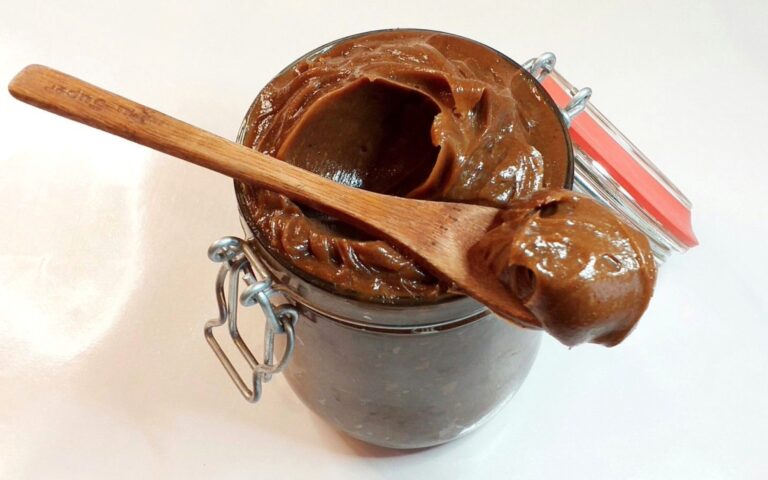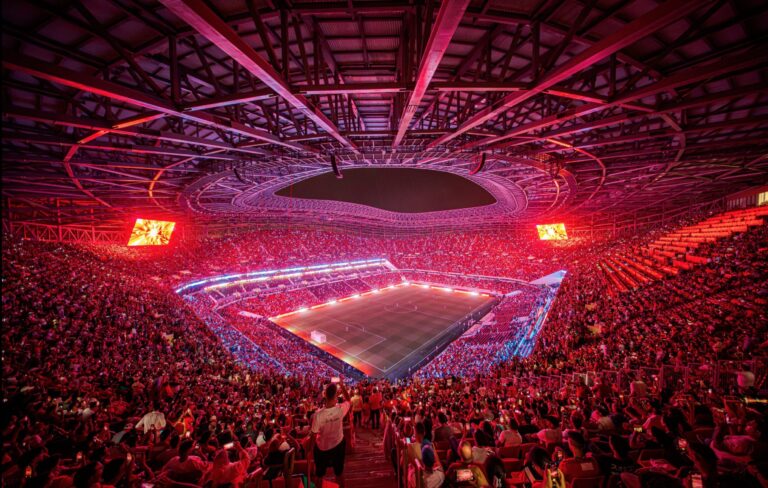
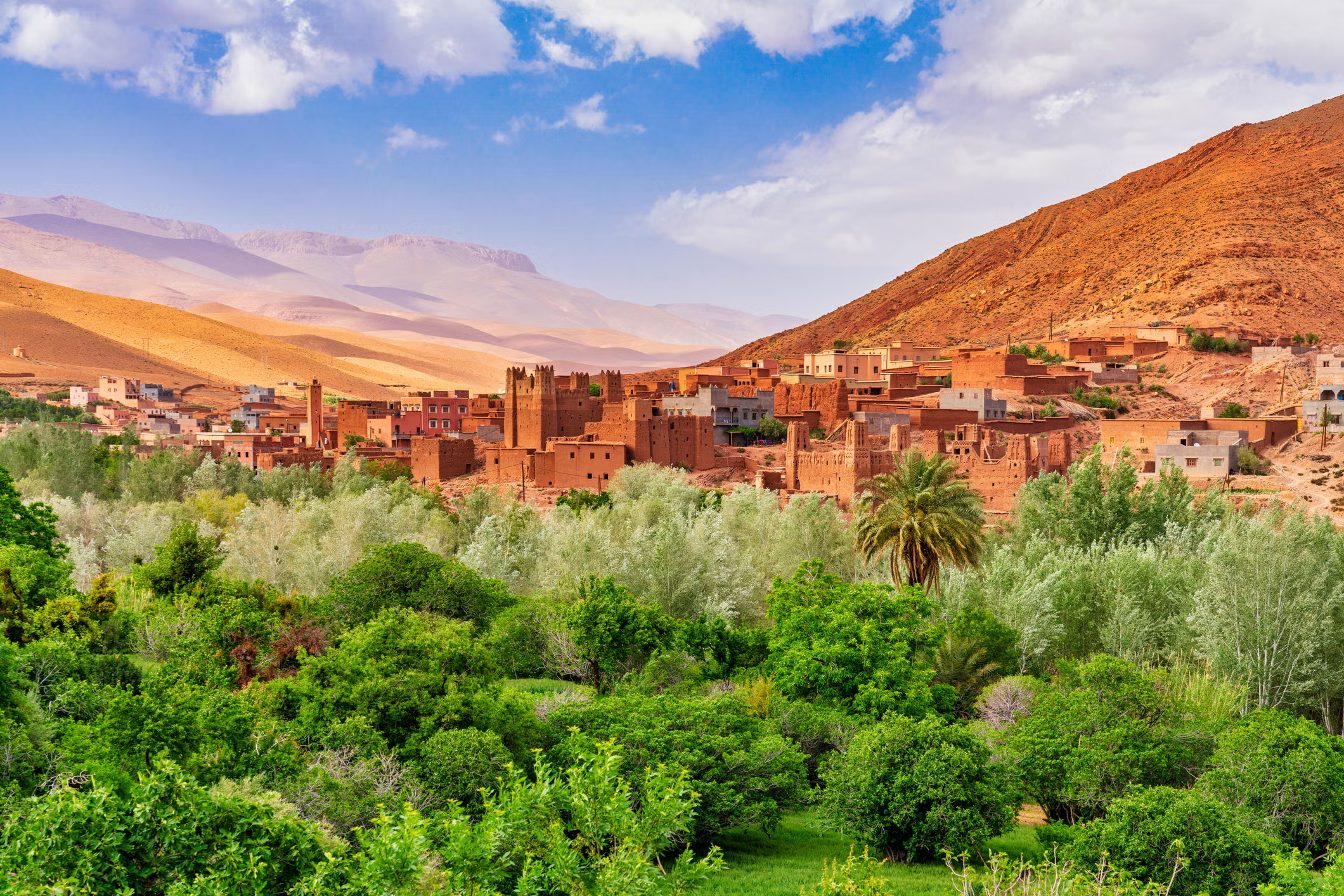
Morocco Travel Guide 2025: Best Places to Visit + Local Tips
Planning a trip to Morocco? This comprehensive 2025 guide covers the best cities, deserts, safety tips, and hidden gems—with detailed itineraries for 7, 10, or 14 days. Whether you’re seeking adventure in the Sahara Desert, exploring ancient medinas, or relaxing in coastal cities, Morocco offers unforgettable experiences for every type of traveler.
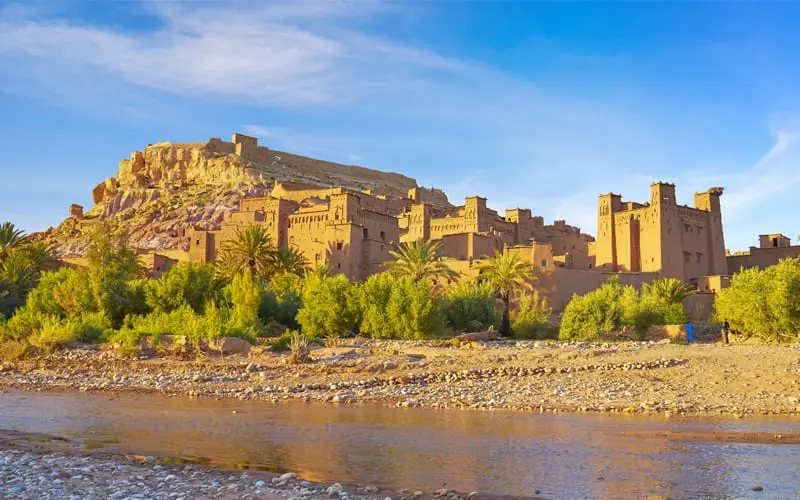
Why Visit Morocco in 2024?
Morocco continues to be one of the world’s most captivating destinations, offering a perfect blend of ancient traditions and modern conveniences. From the bustling souks of Marrakech to the blue-painted streets of Chefchaouen, Morocco provides incredible diversity within a relatively compact area. The country’s improved infrastructure, growing tourism facilities, and favorable exchange rates make 2024 an ideal time to visit.
Best Places to Visit in Morocco
Marrakech: The Red City
Marrakech tops every Morocco itinerary for good reason. The city’s iconic Jemaa el-Fnaa square transforms from a daytime market into an evening spectacle of storytellers, musicians, and food vendors. The historic medina, a UNESCO World Heritage site, houses architectural marvels like the Bahia Palace and the Koutoubia Mosque.
Must-see attractions:
- Jemaa el-Fnaa square and surrounding souks
- Bahia Palace and Saadian Tombs
- Majorelle Garden and Yves Saint Laurent Museum
- Koutoubia Mosque
- Atlas Mountains day trips
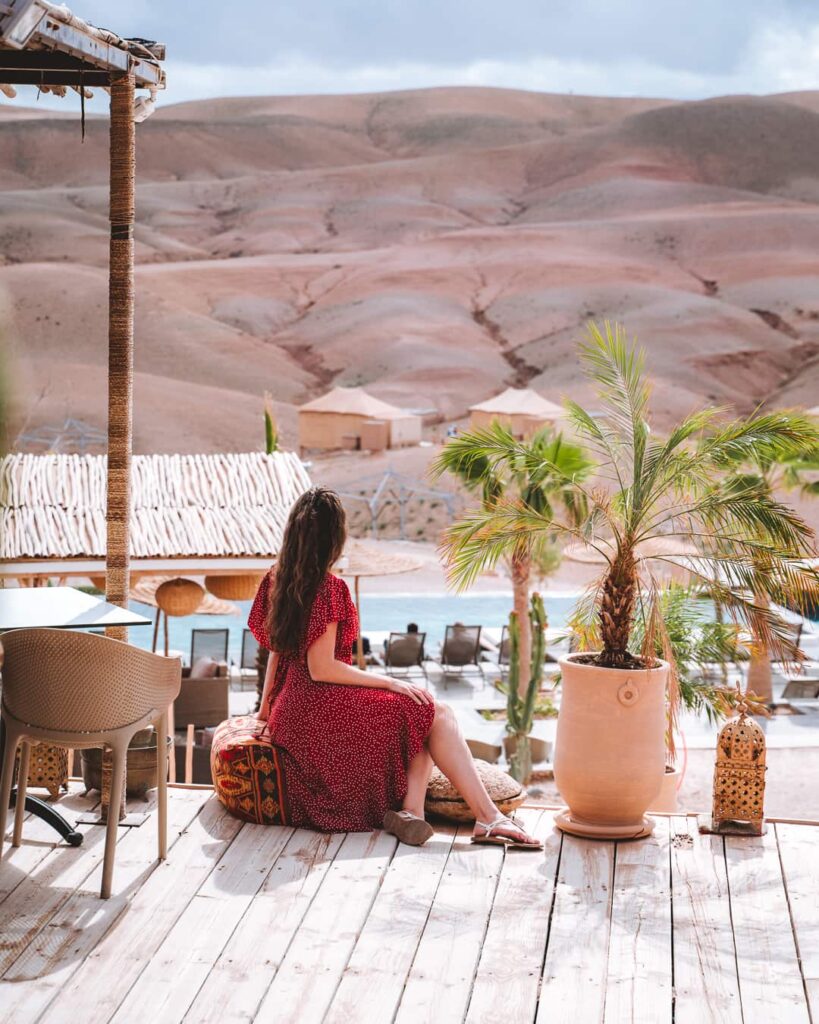
Fez: Morocco’s Cultural Heart
Fez el-Bali, the world’s largest car-free urban area, offers the most authentic medina experience in Morocco. The city’s ancient university, Al-Qarawiyyin, founded in 859 AD, makes Fez a center of Islamic learning and Moroccan culture.
Essential experiences:
- Navigate the maze-like medina with a local guide
- Visit the famous Chouara Tannery
- Explore Bou Inania Madrasa
- Shop for traditional crafts and textiles
- Enjoy panoramic views from the Merenid Tombs
Chefchaouen: The Blue Pearl
Nestled in the Rif Mountains, Chefchaouen’s blue-painted buildings create one of Morocco’s most photogenic destinations. This peaceful mountain town offers a relaxing contrast to the bustling imperial cities.
Highlights:
- Wander the blue-painted medina streets
- Hike to the Spanish Mosque for sunset views
- Visit the local markets for handicrafts
- Take day trips to nearby waterfalls
- Experience the laid-back mountain atmosphere
Sahara Desert: Ultimate Adventure
No Morocco travel guide would be complete without the Sahara Desert experience. The golden dunes of Erg Chebbi near Merzouga offer camel trekking, luxury desert camps, and some of the world’s most spectacular sunrises and sunsets.
Desert experiences:
- Camel trekking at sunrise or sunset
- Overnight camping in traditional Berber tents
- Sandboarding on the dunes
- Stargazing in the clear desert sky
- Meeting nomadic Berber families
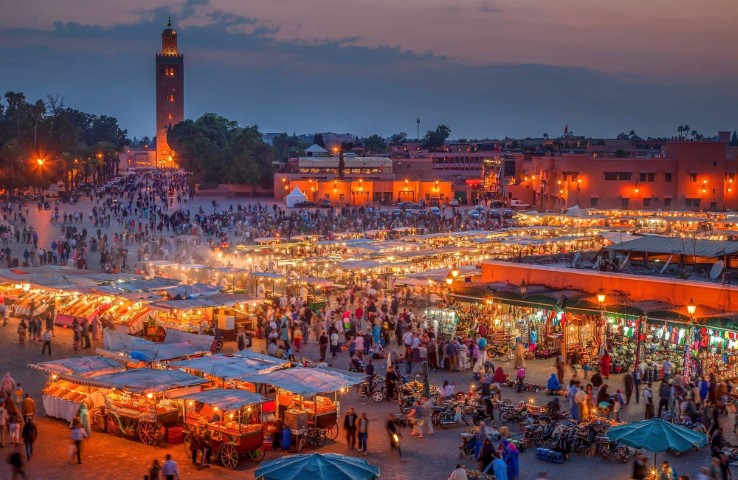
Casablanca: Modern Morocco
While often overlooked by tourists, Casablanca showcases modern Morocco’s economic heart. The Hassan II Mosque, one of the world’s largest mosques, stands as the city’s crown jewel.
Key attractions:
- Hassan II Mosque (guided tours available)
- Art Deco architecture in the city center
- Corniche beachfront promenade
- Rick’s Café (inspired by the famous movie)
- Central Market for local experiences
Essaouira: Coastal Charm
This UNESCO-listed coastal city combines Portuguese, French, and Berber influences. Essaouira’s medina, protected by ancient ramparts, overlooks the Atlantic Ocean and offers excellent seafood, art galleries, and windsurfing opportunities.
Must-do activities:
- Explore the historic medina and ramparts
- Fresh seafood at the harbor
- Art galleries and woodworking cooperatives
- Beach activities and water sports
- Day trips to nearby argan oil cooperatives
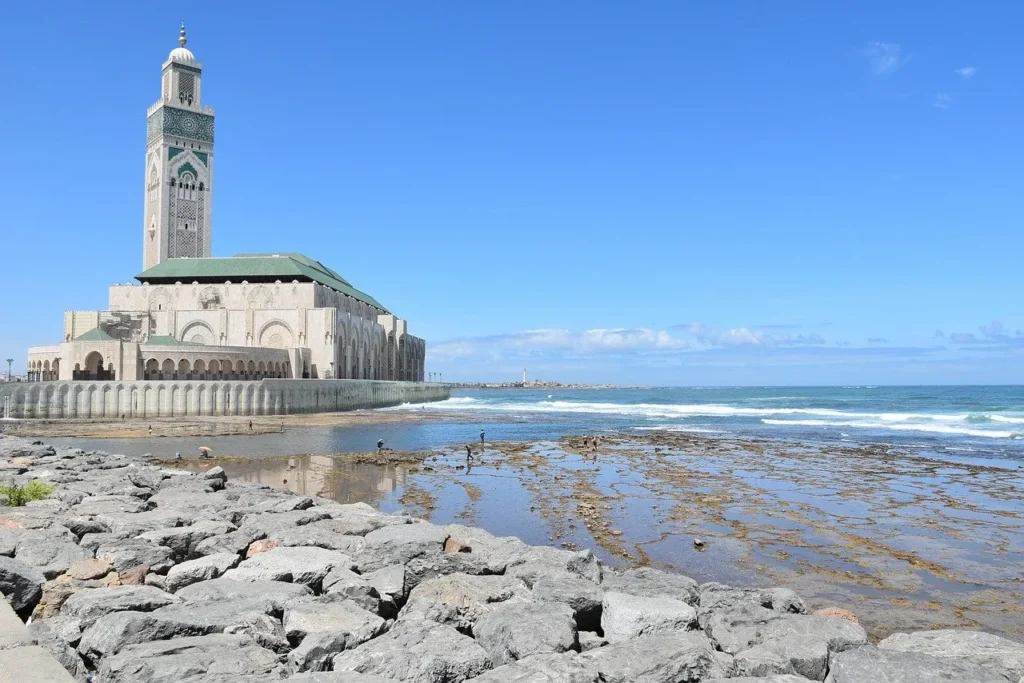
Morocco Itinerary 2024: Detailed Plans
7-Day Morocco Itinerary
| Day | Destination | Activities | Accommodation |
|---|---|---|---|
| 1-2 | Marrakech | Medina exploration, Jemaa el-Fnaa, Majorelle Garden | Riad in Medina |
| 3 | Atlas Mountains | Day trip to Ourika Valley or Ouzoud Falls | Return to Marrakech |
| 4-5 | Fez | Travel day, medina tour, tanneries, madrasas | Traditional riad |
| 6 | Chefchaouen | Travel via Meknes, explore blue city | Mountain guesthouse |
| 7 | Casablanca | Hassan II Mosque, departure preparations | Modern hotel |
10-Day Morocco Itinerary
Days 1-3: Marrakech Start your Morocco adventure in the Red City. Spend your first day acclimatizing and exploring Jemaa el-Fnaa square. Day two should include the Bahia Palace, Saadian Tombs, and the famous souks. Reserve day three for a Atlas Mountains excursion to Ourika Valley or the Ouzoud Waterfalls.
Days 4-5: Sahara Desert Travel to Merzouga via the stunning Dades Valley and Todra Gorge. Experience camel trekking and spend a night under the stars in a desert camp. Wake up early for a spectacular Sahara sunrise before heading back.
Days 6-7: Fez Morocco’s spiritual capital deserves two full days. Join a guided tour of the medina to avoid getting lost, visit the famous tanneries, and explore the beautiful madrasas and mosques.
Days 8-9: Chefchaouen The blue city offers a peaceful retreat in the Rif Mountains. Spend time wandering the blue-painted streets, hiking to nearby viewpoints, and shopping for local handicrafts.
Day 10: Casablanca End your journey in Morocco’s economic capital with a visit to the impressive Hassan II Mosque before your departure.
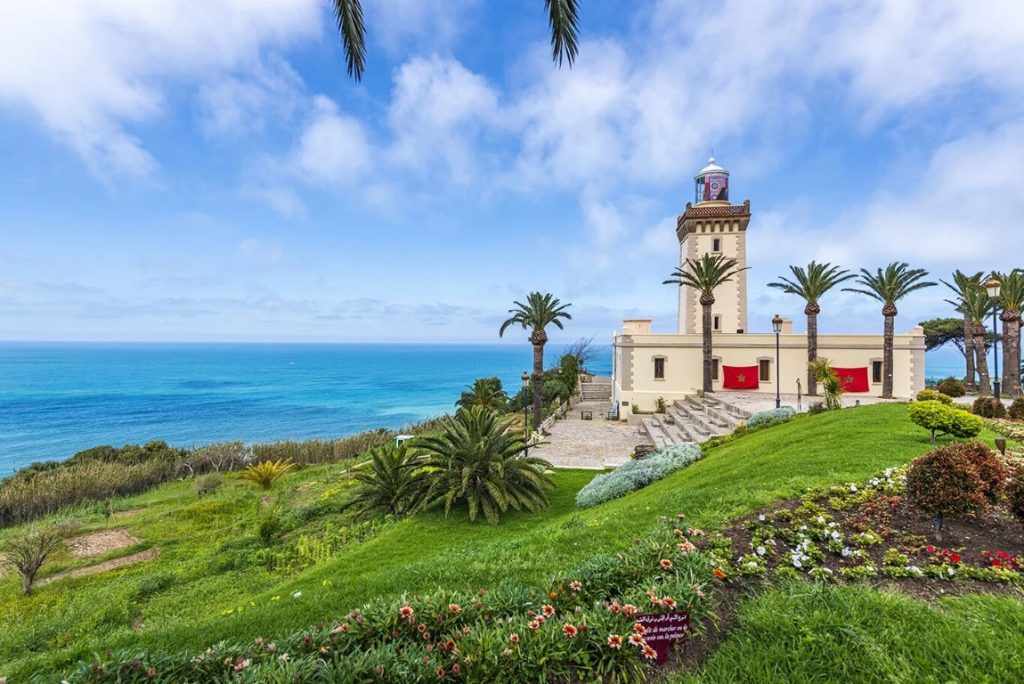
14-Day Morocco Itinerary
Extend your 10-day itinerary with these additions:
- Extra days in Marrakech: Atlas Mountains trekking, cooking classes
- Essaouira (2-3 days): Coastal relaxation, wind sports, art scene
- Rabat (1 day): Morocco’s capital, Hassan Tower, Royal Palace
- Meknes (1 day): Imperial city, Volubilis Roman ruins
Morocco Travel Tips for 2024
When to Visit Morocco
The best time to visit Morocco is during spring (March-May) and fall (September-November) when temperatures are mild and comfortable. Summer can be extremely hot, especially in the desert and interior cities, while winter brings cooler temperatures and occasional rain in the north.
Getting Around Morocco
Morocco’s transportation infrastructure continues to improve. The high-speed train connecting Casablanca, Rabat, and Tangier offers comfortable travel between these cities. For longer distances, CTM and Supratours buses provide reliable service. Renting a car gives you flexibility but requires confidence navigating narrow medina streets and mountain roads.
What to Pack for Morocco
Pack modest clothing that covers shoulders and knees, especially when visiting religious sites. Comfortable walking shoes are essential for exploring medinas. Don’t forget sunscreen, a hat, and sunglasses for protection against the strong North African sun. A power adapter (European two-pin) and portable charger will keep your devices running.
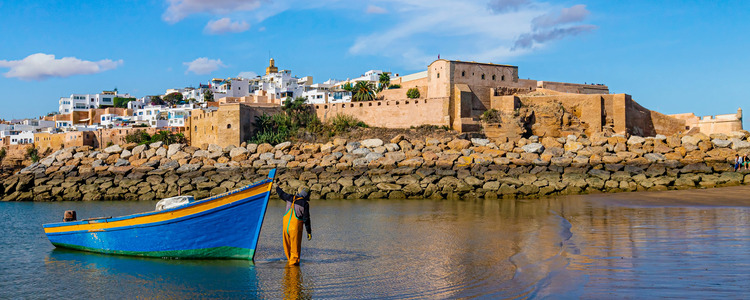
Money and Costs in Morocco
The Moroccan dirham (MAD) is the local currency. ATMs are widely available in cities and tourist areas. Credit cards are accepted in hotels, restaurants, and larger shops, but cash is preferred in souks and for small purchases. Budget travelers can expect to spend $30-50 per day, while mid-range travelers should budget $50-100 daily.
Is Morocco Safe for Tourists?
Morocco is generally safe for tourists, including solo female travelers, when following common-sense precautions. The country has invested heavily in tourism infrastructure and safety measures. However, be aware of common scams in tourist areas, such as fake guides and overpriced goods. Always negotiate prices in advance for services like taxis and tours.
Safety Tips for Morocco Travel:
- Use official guides recommended by your accommodation
- Negotiate taxi fares before starting your journey
- Keep valuables secure and avoid displaying expensive items
- Respect local customs and dress modestly
- Stay hydrated and protect yourself from the sun
- Trust your instincts and avoid situations that feel uncomfortable
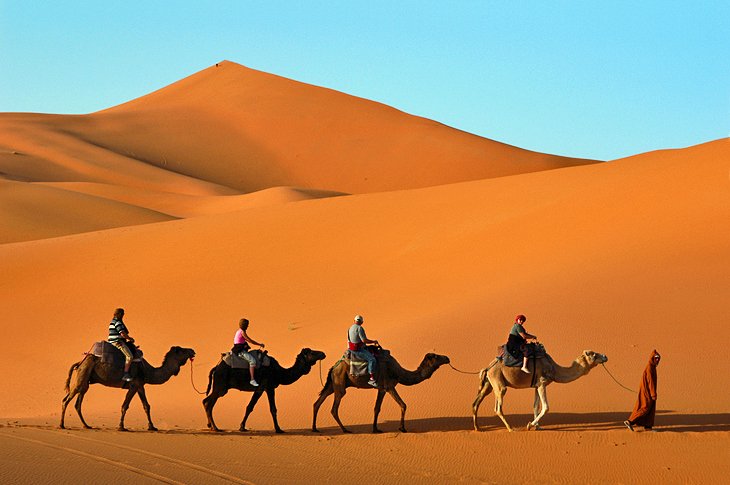
Morocco Cultural Etiquette
Understanding Moroccan culture enhances your travel experience and shows respect for local traditions. Morocco is a Muslim country where Islam plays a significant role in daily life. The call to prayer happens five times daily, and Friday is the holy day when many businesses close.
Cultural considerations:
- Dress modestly, especially in rural areas and religious sites
- Use your right hand for eating and greeting
- Remove shoes when entering mosques or homes
- Ask permission before photographing people
- Learn basic Arabic or French greetings
- Respect Ramadan customs if traveling during this period
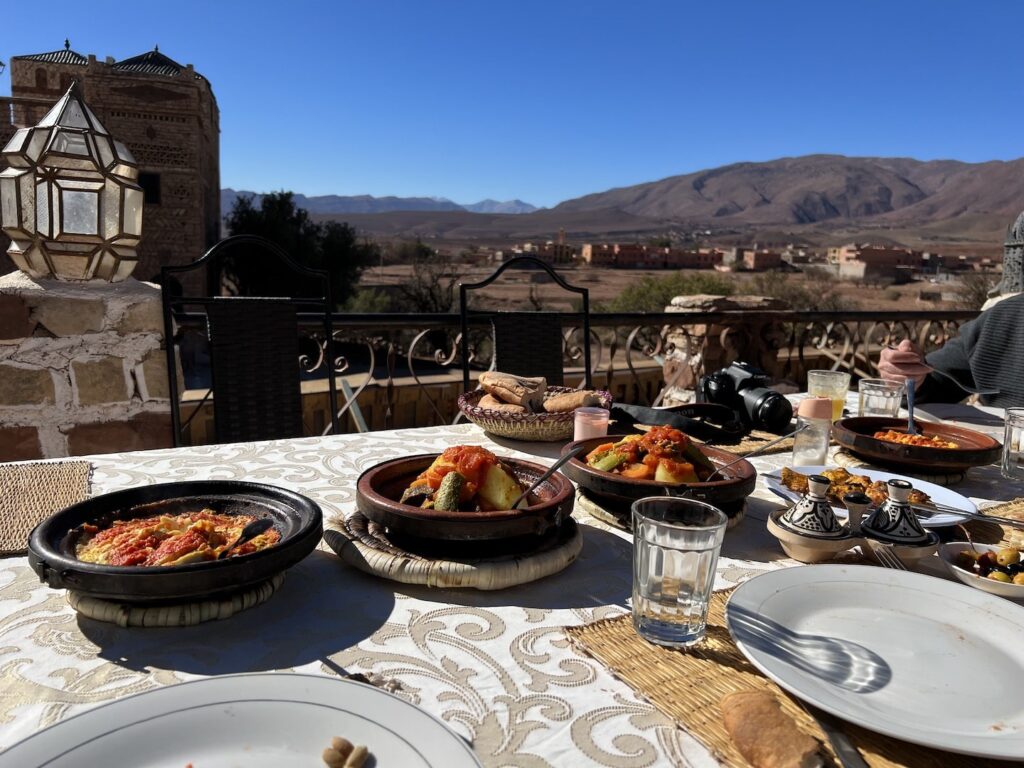
Morocco Food and Drink Guide
Moroccan cuisine ranks among the world’s best, featuring aromatic spices, fresh ingredients, and diverse influences from Berber, Arab, and Mediterranean cultures. Tagines, slow-cooked stews served in cone-shaped clay pots, represent Morocco’s most famous culinary export.
Must-try Moroccan dishes:
- Tagine (chicken, lamb, or vegetable)
- Couscous (traditionally served on Fridays)
- Pastilla (sweet and savory pastry)
- Harira (hearty soup)
- Mint tea (Morocco’s national drink)
- Fresh seafood in coastal cities
Food safety tips:
- Drink bottled or filtered water
- Eat at busy restaurants with high turnover
- Be cautious with street food initially
- Avoid raw vegetables and fruits you can’t peel
- Try local specialties gradually to avoid stomach upset
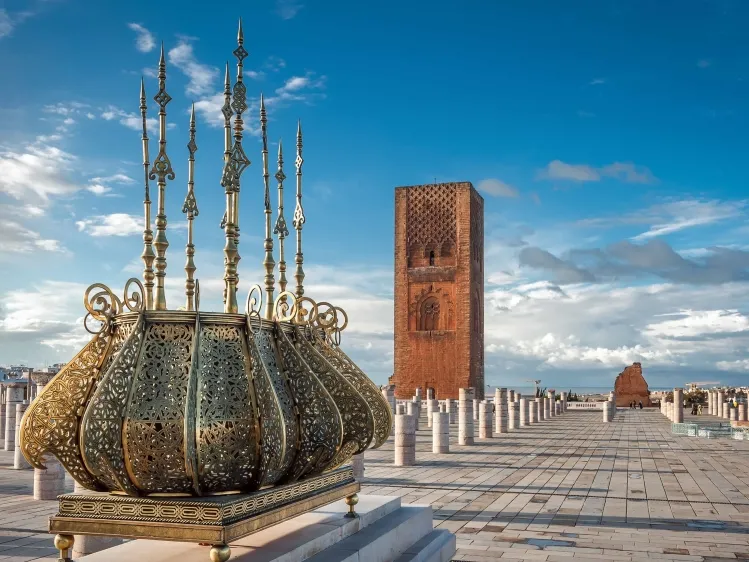
Accommodation Options in Morocco
Morocco offers accommodation for every budget and preference. Traditional riads, converted historic houses built around central courtyards, provide authentic experiences in medinas. Modern hotels in new city areas offer familiar amenities and services.
Accommodation types:
- Riads: Traditional houses in medinas with courtyards
- Hotels: International chains and local boutique properties
- Hostels: Budget-friendly options in major cities
- Desert camps: Luxury and standard camping in the Sahara
- Guesthouses: Family-run properties with personal service
Shopping in Morocco
Shopping in Moroccan souks is an art form requiring patience, humor, and negotiation skills. The markets offer everything from handwoven textiles and pottery to spices and traditional crafts. Remember that haggling is expected and part of the cultural experience.
Best souvenirs from Morocco:
- Handwoven Berber rugs and textiles
- Argan oil and beauty products
- Traditional pottery and ceramics
- Leather goods (bags, shoes, jackets)
- Spices and tea blends
- Jewelry and decorative items
Haggling tips:
- Start at 30-40% of the asking price
- Be prepared to walk away
- Show respect and maintain friendly attitude
- Learn numbers in Arabic or French
- Compare prices at multiple vendors
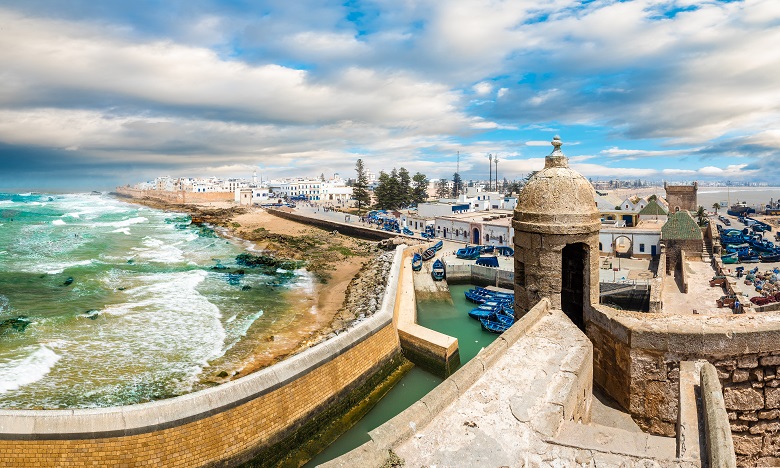
Frequently Asked Questions
Can you drink alcohol in Morocco?
Yes, alcohol is available in Morocco despite being a Muslim country. Licensed restaurants, hotels, and bars serve alcohol, and you can buy it at certain shops. However, avoid drinking in public spaces and respect local customs.
Is Morocco safe for solo female travelers?
Morocco is generally safe for solo female travelers who take appropriate precautions. Dress modestly, trust your instincts, and consider joining group tours for desert excursions. Many solo female travelers visit Morocco without incident.
Do I need a visa to visit Morocco?
Citizens of many countries, including the US, Canada, EU nations, and Australia, can visit Morocco visa-free for up to 90 days. Check current requirements with the Moroccan embassy in your country before traveling.
What language is spoken in Morocco?
Arabic and Berber (Amazigh) are the official languages. French is widely spoken due to colonial history, and English is increasingly common in tourist areas. Learning basic Arabic or French phrases enhances your experience.
How much does a trip to Morocco cost?
Morocco travel costs vary significantly based on your travel style. Budget travelers can manage on $30-50 per day, mid-range travelers should expect $50-100 daily, and luxury travelers may spend $150+ per day.
What’s the best way to get to Morocco?
Morocco has several international airports, with Casablanca, Marrakech, and Fez receiving the most flights. Many European cities offer direct flights, while travelers from other continents typically connect through European hubs.
Final Morocco Travel Tips
Morocco rewards travelers who approach it with an open mind and adventurous spirit. The country’s rich history, stunning landscapes, and warm hospitality create unforgettable experiences. Take time to connect with locals, try new foods, and immerse yourself in the culture.
Remember that Morocco operates at a different pace than many Western countries. Embrace the relaxed attitude, enjoy long conversations over mint tea, and don’t rush through your itinerary. The best Morocco experiences often happen when you least expect them.
Whether you’re exploring ancient medinas, trekking in the Atlas Mountains, or camping under Sahara stars, Morocco offers adventures that will stay with you long after you return home. Use this Morocco travel guide as your starting point, but remain flexible and open to the unexpected discoveries that make travel truly rewarding.



